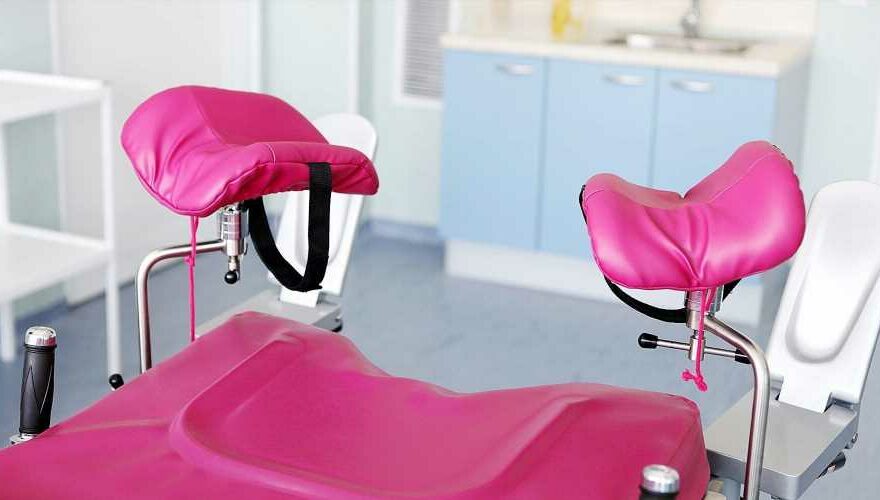It's difficult to narrow down the worst part of a visit to a gynecologist. Is it the sound the speculum makes as it's being cranked to maximum height? The humiliating command to "scooch" closer to the end of the table? (Why are we never close enough?) The awkward rush to disrobe at lightning speed only to spend the next 20 minutes memorizing the wall chart about the effectiveness of various birth control methods while sitting in a mostly open paper gown?
To the best of my medical knowledge, some parts of this experience are inevitable. Though it wasn't until I came across a Twitter thread that I realized some aspects didn't have to be.
On Sunday, urogynecologist Ryan Stewart, D.O., tweeted that he had the opportunity to redesign his new Indianapolis practice, Midwest Center for Pelvic Health, from scratch. In his tweet, he asked women and people who need gynecological care to suggest improvements for office design, from the waiting room to the exam table. And the responses are brilliant.
NBCLX compiled 12 of the top suggestions, including stirrup warmers, size-inclusive gowns and equipment, and a patient-controlled thermostat for when you're naked and afraid and also cold.
Others suggestions include:
- A private weigh station and the option to not only opt out of seeing the numbers on the scale, but to avoid being weighed altogether unless medically necessary.
- A signal or switch to let your provider know that you've finished changing and are ready to be seen.
- A changing space inside the exam room where you can also place your things.
- Separate waiting rooms for patients with children or patients who are in the second or third trimester of their pregnancy, and patients being treated for infertility or routine check-ups.
- Ceiling lifts that help disabled patients up to the table, and generally disability-friendly spaces.
"I sort of expected the things that showed up, like 'point the foot of the bed away from the door,' or 'make sure the windows are covered,' or 'respect privacy,'" Stewart told InStyle over the phone Tuesday afternoon. "Those things weren't big surprises, but the frequency with which they've shown up shows me that as a speciality — or really all of medicine — we've got a lot to work on."
Stewart says he will consider all of the recommendations as he draws up the blueprints for his new space, but "the things that have been the most touching are the really personal experiences" shared in the Twitter thread. "I don't do obstetrics anymore, but there are really some small changes that we can make to be more sensitive to the things that are normal for us because we see them frequently, but have a really profound impact and can create traumatic experiences for people." Avoiding the possibility that a nurse or wayward patient walks in on you while you're at your feet-in-the-stirrups, most-exposed, or that you spend 15 minutes surrounded by pregnant women while waiting to be see about your infertility, shouldn't just be possible. It should be the norm.
Stewart, whose focus as a urogynecologist includes treatment of pelvic organ prolapse and urinary incontinence, notes that none of the conditions he treats are necessarily life threatening. "They're about improving quality of life," he says. "And that really starts with improving the quality of life from the first moment [patients] come into contact with us."
When thinking about the advances in medicine and care in the past few decades — even the last 5 years — it's especially frustrating to consider that the look and feel of many doctors' offices has remained the same. Especially regarding women's reproductive health (hello, IUD-insertions-from-hell stories, or the indignity of being denied the right to safe abortion care), why has it taken so long for patient comfort to improve?
"By and large, medicine is a pretty conservative business," says Stewart. "The thing that's more interesting is when we get a chance to start from scratch or start new — why aren't we taking bigger risks?"
Stewart says he also consulted with this wife, a reproductive endocrinology fertility specialist, when it came to the layout of the space. She once told him, "'If you have a chance, put something on the ceiling, because it helps distract and change the focus,'" he notes. "I always thought, 'That's kind of odd …' but that will happen now. I should've listened to my wife the first time."
Moral of the story: Listen to women.
Source: Read Full Article
